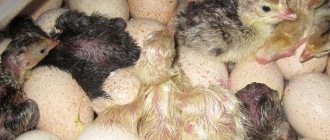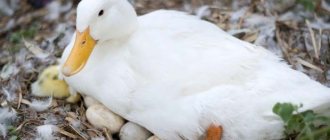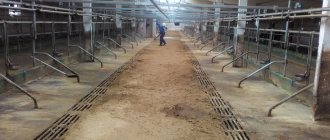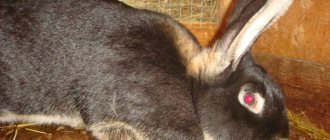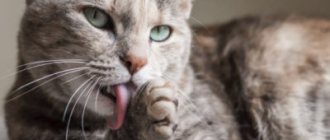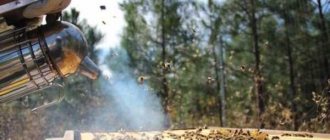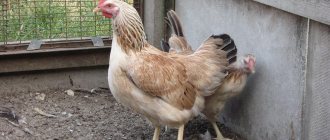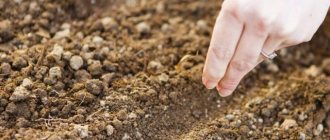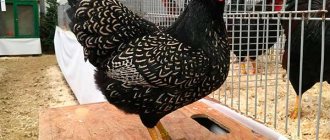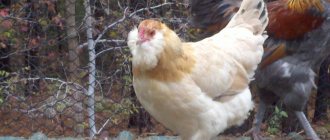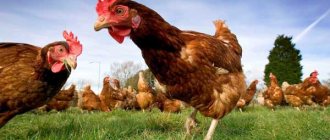Raising chickens on a private farm requires more than just time and effort from the poultry farmer. To make a profit from your activities, you need to learn how to quickly respond to bird health problems. Lameness in chickens is a fairly common phenomenon. A poultry farmer must be able to recognize warning signs and know how to act in a given situation. If the hen begins to limp, it is important to find out what led to the problem and whether other individuals are at risk.
Private chicken farming
general information
Of course, those farmers who have been involved in poultry farming for several years are already familiar with this problem and have an idea of how to treat chickens; they do not panic. But a novice farmer has a hard time: you can literally fall into a stupor, especially if the pathology “suddenly” affects several individuals at once.
Let us note that whatever the reason, damage to the farm will be caused in any case: and the more birds affected, the more noticeable the damage.
Chickens' egg production decreases, and those eggs that appear are often fragile and have a thin shell. In addition, treatment costs can be significant, and bird numbers are sometimes significantly reduced.
Chickens can fall on their feet and limp for various reasons, the most common of which are the following:
- critical lack of vitamins and beneficial microelements in the poultry menu;
- tendon inflammation, arthritis, rickets;
- other diseases;
- injuries, wounds and cuts;
- keeping poultry in improper conditions.
Next, we will go through all the points in detail and find out how to identify each of the causes and how to treat birds.
Marek's disease and pasteurellosis
What made corydalis sick? After retiring, she settled in the village and started raising chickens. Something is not going well: my chickens are dying. They begin to limp on their right leg. If you kill a bird at an early stage of the disease, the liver is covered in light spots, reminiscent of barley seed. Over time, the bird becomes “boring”; the comb, beard, and ears darken, although the appetite does not disappear until the last day. After death, the bird's liver is covered with a kind of abscess - light round spots of blue-green color with radiating rays. The skin at the junction of the wing and the body is loose, blue-red in color, with a darker spot in the center. The villagers say: a chicken is lame - kill it, nothing will happen to it. And so it is. I would like to know the cause of the disease, its name and how to prevent the disease.
Vydrich G.A.
Marek's disease causes a lot of concern to chicken farmers all over the world and the Osipovichi district, unfortunately, is no exception. Chickens are very sensitive to this disease. The source of infection is sick birds, as well as virus-carrying birds. When a disease occurs in a flock, almost all birds become infected. Hens are more susceptible to infection than cockerels. The degree of infection depends on age, gender, genetic resistance, as well as innate immunity. The loss of poultry in a dysfunctional flock with the classic form of the disease ranges from isolated cases to 50%. The acute form of the disease occurs at the age of 3-5 months and is much less common in adult birds. The disease appears suddenly, proceeds rapidly and with a high mortality rate. The bird becomes very thin, the internal organs are affected by tumors, the liver becomes enlarged (covered with spots), spleen, kidneys, and the glandular part of the stomach. There are also cutaneous forms of Marek's disease.
What can be advised to amateur chicken keepers who want to protect their pets from this insidious disease? In factory conditions, chickens are vaccinated with a vaccine immediately after hatching in the incubation workshop. Therefore, try to replace the dead bird with factory-made chickens
Be extra careful if this disease appears in your neighbor's yard. And of course, in this situation, under no circumstances take a bird from your neighbor, even if it looks quite healthy
There are no special medications to treat this disease.
What happened to my poor chickens? They wither, stumble as they walk, their crest turns black. It lasts like this for a month or two, and then it dies. You open it up, and the lungs are all speckled with white and a little decomposed. What is this disease and how to treat it?
Shlyakhtichev S.F.
Judging by the description of pathological changes in the dead bird, pasteurellosis is observed. Avian pasteurellosis is an acute, sometimes subacute or chronic infectious disease that affects all types of poultry. The infection can be spread by sparrows, rooks and other birds that fly into yards. Adult chickens and young chickens older than two months are most susceptible to pasteurellosis. Birds become infected through the respiratory tract, but the possibility of infection through the digestive tract cannot be ruled out.
In the acute course of the disease, the bird becomes lethargic, keeps itself apart, sits in one place, a lot of foamy mucus flows from the beak and nose, and wheezing may appear. Feathers are dull and ruffled.
Lack of nutrients in the diet
The most common cause of pathology for which chickens fall on their feet. If birds are lacking important nutrients, it is not surprising that they fall on their feet.
Despite the apparent mildness of vitamin deficiency, in the case of birds it can lead to quite serious consequences, including fatal ones. The danger is also that the lack of vitamins affects all livestock without exception: all birds suffer equally.
Symptoms of vitamin deficiency in chickens include:
- weakness, immobility of livestock;
- poor appetite;
- pale skin;
- slow growth, poor development;
- chicks' feathering is delayed;
- visual impairment;
In addition, the lack of vitamins also affects the respiratory system: birds breathe frequently, gasp for air with their beaks, and sometimes poultry farmers see a bird fall unexpectedly, including on a flat floor.
Fortunately, the situation has not yet taken on irreversible forms; it is quite simple to correct it: you just need to fill the chickens’ diet with useful microelements and vitamins, and include mineral supplements.
What to do?
It is recommended to give birds liquid vitamins A and E, as well as fish oil rich in essential microelements. Add vitamins to regular food, from where it is guaranteed to get into the birds' bodies. You can easily purchase these vitamins at a regular pet store, or order them from an online store.
To make your birds’ diet more fortified and healthy, include the following components:
- beets and carrots;
- cabbage;
- bone meal;
- sprouted grain.
Fresh herbs also perfectly compensate for the lack of vitamins.
Pelvic pain in men
Pain in the pelvic area in men does not have a clear localization. Most often they are felt in the area near the navel and spread to the lower abdomen, as well as to the perineum, back, and rectum. The causes that cause them are represented by diseases of the reproductive system, which are presented in our table below.
| Disease-cause | Clinical manifestations |
| Chronic bacterial prostatitis | Painful symptoms of moderate intensity, which intensifies at the beginning of urination. As the disease develops and the urethra is involved in the process, the pain becomes constant and the man becomes irritable |
| Tunnel pudentopathy - damage to the pudendal nerve due to pathological changes in the lumbar spine | Feeling of tension and pain in the genitals and pelvic floor muscles, accompanied by urination problems |
| Prostate tuberculosis due to diseases of the urinary tract and testicles | Symptoms depend on the location of the foci of the disease and are expressed in pain in the pelvic area. It is accompanied by a false urge to urinate and its disturbances, purulent discharge in advanced disease |
| Prostate fibrosis | Painful symptoms in the pelvic area are accompanied by a number of sexual disorders and urination disorders |
Rickets
More often, rickets affects young chickens, not adults. The disease is also called D-hypovitaminosis. As a result of the developing pathology, the skeletal skeleton of the birds weakens, the limbs also weaken, and the chicken falls on its feet.
If a chicken has developed rickets, it will fall on its legs because its bones and skeleton are too fragile. If rickets is not treated, its complication, osteomyelitis, may develop. Death is also likely due to severe softening of skeletal tissue.
A sign can be not only the bird falling to its feet, but also a stop in laying eggs.
Also, with rickets, the following symptoms are very likely:
- loss of appetite in birds;
- weakness and lethargy;
- loss of pomp and decorativeness in feathers;
- weakness of the paws (the same condition when “the legs cannot bear”);
- movements are unbalanced, coordination is impaired;
It is advisable to begin treating rickets at the first signs - many more serious problems can then be avoided.
What to do?
Treatment of avian rickets should be comprehensive:
- It is necessary for the chicken to spend a lot of time in the sun, under the influence of which its body produces vitamin D and strengthens its bones.
- Adding vitamin D to the food in the form of liquid or oil will also do a good job.
- It is necessary to add microelements such as calcium and phosphorus to the diet.
- Intensive vitamin therapy with a predominance of vitamin D and heating the birds in ultraviolet light will undoubtedly be beneficial.
If rickets is in the initial stage, the above measures can cure the bird completely. But if osteomyelitis has already begun to develop, this leads to irreversible deformation of the limbs. And even after complete recovery, the defect is not eliminated.
Arthritis
This disease of poultry is also popularly called “dirty foot disease.” This joint disease is of viral origin. In more rare cases, arthritis occurs as a result of an unbalanced, poor diet.
Viral arthritis is often called tenosynovitis. The causative agent of this dangerous disease is reovirus. In this case, the chicken will first begin to limp, then become almost motionless. A rupture of the shin bones and severe destruction of the cartilage tissue in the legs are likely.
The bird's appetite decreases, and the skin color becomes pale. Egg production and bird weight also decrease noticeably. Viral arthritis often develops as a complication after infectious diseases suffered by birds.
It is not difficult to detect the disease: you just need to carefully feel the bird’s joints. With arthritis, the joints will be noticeably inflamed, swollen, and hot to the touch.
Additional symptoms may include:
- pain in the legs of the bird;
- stiffness of movement, leading, among other things, to falls;
- complete failure of the legs is also possible - then the birds sit or lie down and practically do not move.
Note that this disease is dangerous and is difficult for chickens to tolerate. If the disease is not treated, inflammation from one joint will spread to others, expand, and go deeper into the tissue.
Thus, the acute phase of the disease turns into a chronic one. More often, adults suffer from arthritis; chickens are much less likely to suffer from arthritis.
What to do?
Arthritis needs to be treated urgently, as the disease progresses rapidly. Special antiviral drugs are prescribed.
Along with antivirals, antibiotic treatment is also indicated. The following drugs can be considered as suitable antibiotics for viral arthritis:
- Ampicillin;
- Sulfadimethoxine;
- Polymyxin M sulfate;
- Benzidepenicillin.
Give antibiotics to chickens for at least five days. Usually the course takes a week, but if the arthritis has progressed greatly, it can take longer. It is not advisable to self-medicate; it is recommended to show sick birds to a veterinarian.
They are also treated with folk remedies, which according to reviews are quite effective. So, some poultry farmers give sick chickens a drink of vodka: however, with this method it is important not to overdo it with the “treatment”. Otherwise, the bird will do more harm than good.
Preventive measures are also important to help minimize the likelihood of disease. To prevent chickens from getting arthritis, keep the room where they are kept clean. It is necessary to regularly clean cages and pens, and immediately isolate sick birds from others.
Multivitamins and green food will be very useful for arthritis.
Gout
Chickens may also be affected by this “disease of kings.” The cause of gout is the accumulation of salts and uric acid in the joints. The symptom of the disease is swollen and very hard-to-touch joints. Characteristic growths-bumps can be seen on the bird’s legs.
Birds endure gout hard: they walk little and poorly, sometimes they literally fall off their feet. Because movement causes pain, the chicken cannot be moved from its place.
Typically, the cause of the pathology is long-term feeding with mixed feed with a high content of meat and bone meal or fish meal. As a result of such nutrition, the metabolism in the bird's body is disrupted.
What to do?
It is necessary to balance the diet, remove excess feed with gout-provoking flour. It is advisable to switch laying hens to a diet with a predominance of whole and sprouted grains.
Curvature of fingers
Veterinarians call crooked fingers a “territorial” disease. The bird's small joints are twisted and one of its legs is lost. Birds raised in northern regions are more often affected. First, lameness is observed, the bird stands poorly, and soon the chicken does not stand on its feet at all.
If your toes become crooked, chickens may stop standing on their feet.
Causes
Causes of the disease:
- If an individual stands poorly or limps, the reason for this is the freezing of the paws of chicks and young individuals. If chickens are raised in regions with cold climates, they develop hypothermia of the extremities from childhood.
- Indirect causes are violations of maintenance rules, lack of nutrition and genetic predisposition.
Symptoms
Symptoms of the disease:
- When the fingers of chickens are bent, the birds get a defect in the spine, and the tilt of the body changes.
- The chicken limps, sways from side to side, does not stand up for a long time, leans in different directions when walking, and often lies on its side. Young crosses stand with one leg raised or extended to the side.
- Egg production and productivity in domestic broilers are falling.
Treatment
Treatment methods:
- The treatment for this disease lies in prevention. From the first days of life, chickens are provided with proper care and maintenance. Chicks require good dense bedding, an insulated bulk floor, and no drafts.
- A nutritious diet with high levels of calcium and potassium.
- If the curvature of the fingers of a rooster or laying hens is a congenital pathology, a genetic deviation, such individuals are not left for brood.
Pododermatitis
This disease can also lead to a chicken falling on its feet, and it occurs due to insufficient hygiene of cages and chicken coops.
Along with the bird falling on its feet, in this case the following symptoms appear:
- the skin on the paws becomes inflamed and may crack;
- visible wounds on the legs;
- the bird is limping;
- presses paws to body;
- The chicken's legs are hot to the touch, which indicates an inflammatory process occurring in them.
What to do?
It is necessary to increase the bird’s immunity by adding healthy vitamins and minerals to its diet, and also be sure to monitor hygiene in the room. Change the bedding in cages and nests more often, and remove droppings on time.
Inflamed paws should be thickly lubricated with fish oil or syntamicin ointment. Your veterinarian may also prescribe another anti-inflammatory drug.
Prevention
For prevention, you need to use a set of preventive measures:
- provide the necessary light and temperature conditions;
- monitor the balance of nutrition, the amount of vitamins and nutrients (the diet differs for different age groups of birds);
- ensure injury prevention, eliminate crowding;
- keep the chicken coop and the bird's walking area clean;
- vaccinate chickens;
- young animals from another farm must be quarantined.
Injuries
A chicken can suffer the following injuries, causing it to fall on its feet:
- fracture;
- rupture, tendon displacement;
- dislocation;
- a cut;
- sprain.
To rule out this cause, carefully examine the bird's limbs. It is also recommended to feel them. A cut can be detected immediately, but a fracture or dislocation requires a more detailed examination.
What to do?
If an injury is discovered, it is best to invite a veterinarian to examine the bird and make recommendations for treatment.
To prevent further injury, remove cutting, dangerous objects from the coop and run area. It is also recommended to keep aggressive birds that start fights in the yard separately.
And do not build a perch in the coop that is too high, as the bird may fall from it while sleeping and be injured. A height of 90 cm is quite enough.
Chickens are limping how to treat
Areas of the limbs with cracks, abrasions, and ulcers are treated three times daily with 3 percent hydrogen peroxide and 2 percent Chlorhexidine.
Removal of softened dead tissue. Wound healing ointments, for example, Tetracycline, Levomekol, etc., are applied to the affected areas for two weeks (minimum 10 days).
Supplementing the diet with greens, carrots, and sprouted wheat.
- Reducing the likelihood of gout by prescribing synthetic vitamin A (2-3 thousand IU).
- Drinking 2% hexamethylenetetramine or baking soda for a course of 7 days.
- Introduction of Zinkhofen (0.5 g/1 bird) into the feed mixture in a course of 3 days with a week break.
Use of acaricidal ointments, birch tar, and ASD-3 fraction against scabies. Typically, 2 treatments of the affected areas at 7-day intervals are sufficient. Before treatment, the affected limbs are immersed in a soap solution for 20 minutes: soap (50 g) + warm water (1 l). This procedure better softens crusts and scabs.
Strengthening the immune system of chickens and hens through the oral administration of Catozal (2 ml/l of water for 5 days), Gamavit (5 ml/l of water for a weekly course).
Carrying out decontamination of the poultry house after removing old litter and excrement from it. Apply Butox-50, Neostomazan, Ecocid S, Ectomin or Neocidol according to the instructions once every 5-7 days. The walls and floor of the room are best treated with a spray bottle, left for two hours, and then rinsed very thoroughly with water and allowed to dry.
By the way, drinkers and feeders are also washed, doused with boiling water and dried. The same is done with cages for ornamental birds.
Why does the chicken lame? Only a veterinarian can establish the real cause of lameness and make the correct diagnosis.
Do not hesitate to contact a specialist to analyze the feeding and housing conditions, as well as conduct laboratory tests. When talking about living conditions, it is important to remember the correct perches.
If possible, consider keeping chickens on deep litter (sawdust + bacteria): the chicken coop is dry, warm in winter, no smell, no flies, and cleaning every 3 years!
Good luck!
Subscribe to site updates and our channel “Chicken” in Yandex.
See you later, colleagues! In the meantime, we will prepare new and interesting information for you!
Did you like our tips? Share with friends on social media. networks!
Scabies
This disease, which is not very dangerous for humans, in the avian environment can even lead to such serious consequences as falling on one’s feet.
Scabies is diagnosed quite simply, since in this case growths appear on the bird’s legs that an experienced veterinarian will not confuse with anything else. The causative agent of the disease is the scabies mite. The parasite is transmitted to birds from sick individuals, through a common feeder and bedding.
Symptoms of avian mange are as follows:
- Unsightly growths form on the paws, preventing the bird from walking and moving;
- a white coating is noticeable on the skin of the paws (“lime foot”, as people say);
- the chicken gets up extremely reluctantly and only as a last resort;
- the bird is inactive and lethargic.
What to do if the bird is debilitated by scabies?
Fortunately, scabies is the lesser evil in this case. Treating the disease is simple: the legs of affected individuals are treated with a strong solution of soap, and then with special anti-scabies preparations.
Tendon displacement
Sometimes the chicken walks with a limp because it suffers from dislocated tendons. This disease is more typical for representatives of the broiler species, so try to inspect your broilers more often. In general, the problem of tendon displacement often affects fast-growing poultry. In addition, if during the period of active development a chicken does not receive enough vitamin B or is given unbalanced food, do not be surprised that you are faced with this kind of deviation.
It is quite simple to determine this disease: the tendons swell to a large size, and then seem to twist. The first thing to do in this case is to actively add vitamin B or manganese to your food. But if the situation has noticeably worsened, and poultry refuses water and food, the only way out is to slaughter the sick individuals.
Perosis
In simple terms, perosis is nothing more than a displacement of the tendons. Most often, this disease affects broiler chickens that grow too quickly.
The disease occurs due to a lack of B vitamins and other valuable microelements in the diet. The symptom is the bird's paws, turned at an unnatural angle. Such an individual is not able to jump onto a perch; it eats little, practically does not move, and its legs give out.
What to do?
Treatment is ineffective; chickens with perosis are usually destroyed. Well, for the purpose of prevention, it is, of course, necessary to make the birds’ diet complete and fortified.
In what cases is specialist help for pain urgently needed?
You should not delay contacting a doctor under the following symptoms and circumstances:
- the ankle joint hurts and is very swollen, because of this you are unable to put on shoes;
- due to intense pain you cannot lean on your leg;
- noticed instability of the ankle, loosening (occurs with complete or partial rupture of the ligaments);
- pain occurs when you stand;
- the soreness is felt not only in the muscles, but also deep in the ankle.
Other reasons
There are other possible reasons for chickens falling on their feet - they happen less frequently, but are still possible.
Firstly, the culprit of the problem is sometimes the too cramped space in which the chickens are kept. If birds are forced to live in cramped conditions, they have little space for walking and maneuvering, and as a result, laying hens lead a sedentary life. The paw muscles in such conditions can simply atrophy.
Infectious diseases that the bird suffers from can also be the culprits of the problem. Note that weakness and incontinence of a chicken on its legs can be a sign of many diseases characteristic of poultry.
Congenital pathology also occurs, which leads to curling of the toes. Underdevelopment of joints, as well as inflammatory processes in them, can also lead to chickens falling on their feet.
Whatever the reason, in any case it is necessary to establish it as quickly as possible and begin treatment of the bird.
Diseases caused by insects, what to do?
Diseases caused by insects belong to a separate section. Due to the variety of symptoms, a definite diagnosis may not be made, so treatment of pathologies is complex.
- Pooh-eaters, feather-eaters. Parasites damage the feather shafts, leaving small holes in them, so the chickens begin to itch and molt. To treat the pathogen, aerosol treatment and wood ash are used.
- Fleas. If fleas appear in the nests, the hens become restless and do not want to sit on the clutches. The chicken coop should be treated with insecticides and the litter should be changed regularly.
- Ticks. A symptom of their appearance is the loss of feathers. Mites cannot be controlled and chickens must be killed.
- Lice or bedbugs. Parasites live in the nests, coops and bodies of birds, feeding on their blood. To eliminate insects, poultry houses are regularly treated with chlorophos and karbofos.
- Chickens can also be affected by ringworm and aspergillosis.
Diseases of chickens caused by insects
If you do not want to lose chickens, then you should periodically take preventive measures, separating sick individuals from healthy ones, destroying those who cannot be cured. Once every 30 days the poultry house should be treated with disinfectants. Birds need to be provided with proper care and a balanced diet.
General treatment recommendations
Let's find out what general measures will allow you to cure the bird and avoid further problems with it falling on its feet.
Diet
Analyze the chicken’s nutrition and include more fortified components in the diet. In any case, this measure will be beneficial and can save the chicken not only from the problem in question, but also from many other diseases.
Starting from the fifth day after birth, give chickens vitamins A and E. Add mineral salt, chalk, fish or bone meal to the feed of adult birds.
It is especially important to fill the diet with useful microelements if the chicken’s beak tissue is also softened during examination, and it lays eggs with a fragile, soft shell. This is a clear lack of calcium.
Sun
Record how much time the birds spend outdoors. Lack of lighting can negatively affect the condition of the chicken.
Care, arrangement
Competent and timely care of laying hens is extremely important. Birds should not be kept crowded, in a stuffy small chicken coop or cage. Arrange the chicken coop so that there is at least one square meter per 3-4 adults. meters of space.
https://www.youtube.com/watch?v=xsWL53eu7AY
Curly fingers
Curly chicken feet are a serious disease, or rather pathology. Provide adequate care for chickens in the first weeks of their life, since they acquire such a deviation during this period. If your poultry does not manage to avoid a similar fate, you are unlikely to be able to correct the curliness in the future. Why can such a physical defect appear? Perhaps the whole point is the low quality of the feed that you purchase for your chickens.
The most dangerous thing about curling is that it increases the risk of mortality among the young members of your coop. But if the chickens successfully survive this period, they will continue to live with the acquired pathology, although it is almost impossible to completely remove curliness.
When is it necessary to contact a veterinarian?
Sometimes you can eliminate the problem yourself, however, some cases of chickens falling on their feet require urgent intervention from a specialist.
Let's find out what these cases are:
- if the chicken flatly refuses to eat, even if it has not eaten for a long time;
- if he practically doesn’t get up at all;
- if the bird's feathers are ruffled;
- if you were unable to independently determine the reason why your legs failed.
Until the veterinarian determines the cause of the bird's illness, it must be placed in a separate cage. They should also be released for walking separately from other animals. It is important to feed the bird fully and include vitamin supplements in its menu.
So, we found out why a chicken falls on its legs and how to stop this problem. There can be quite a few reasons: it is important to determine the correct one yourself or with the help of a veterinarian, and treat the bird based on this.
Chicken lameness
Lameness in chickens signals a problem and is possible due to a mechanical injury, a paw entangled in something, a piece of droppings being caught in a claw, muscle damage, kidney disease, extremely rapid weight growth, spurs or a lack of nutrients. The symptom manifests itself more clearly every day due to the uneven load on the paws. Over time, for this reason, the healthy leg is affected and the joints become inflamed. Lameness occurs in both legs, leading to complete immobility.
They are treated taking into account the cause: all mechanical obstacles are destroyed (thread, droppings, etc.), cuts must be treated. If muscles or tendons are damaged, then nothing can be done - it takes time to recover. If there are no obvious reasons, then they look for internal problems that provoke lameness. This is often associated with vitamin deficiency.

